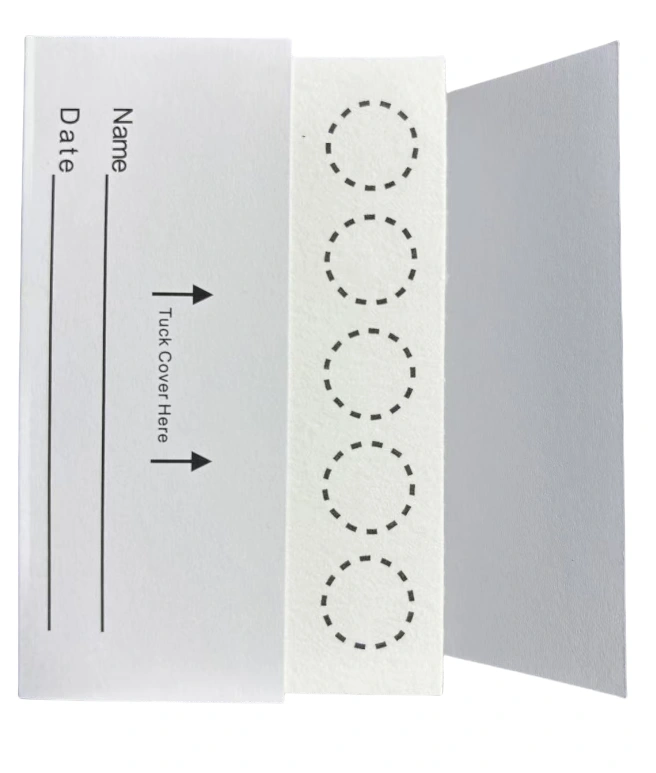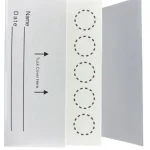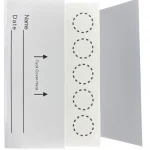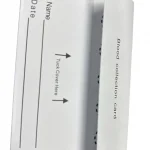903 HCY DNA Blood COLLECTION CARD
In the field of medicine and biological research, sample collection is a key link. In order to ensure the accuracy and reliability of experimental results, scientific sampling methods are particularly important.
As a convenient sampling tool, biological sample collection cards are gradually becoming the first choice for laboratory and field testing.
Specification:
| Product Name: | FTA 903 blood collection card |
| Other Name | Dry blood spot collection card(DBS card) |
| Cat. No. | CY-A1-005 |
| Card SIZE: | 10cmX7cm |
| The 5 Circles Diameter | 10mm |
| effective use area of | 5*5cm |
| Package: | sealed in bags, 200 pcs/boxes,10 boxes/carton |
| Factory | GMP factory |
| Quality standard | DNA RNA free |
| Transport condition | Ambient temperature |
| Store condition | Dark dry, 2-25°C |
| Life Time | Over 5 years |
| Certificate | FDA CE2862 TGA ISO13485 NMPA MEPL MHRA |
In the field of medical and biological research, sample collection is a key link. In order to ensure the accuracy and reliability of experimental results, scientific sampling methods are particularly important. As a convenient sampling tool, biological sample collection cards are gradually becoming the first choice for laboratory and field testing. This article will introduce the characteristics, usage methods and advantages of biological sample collection cards in detail to help readers better understand this important tool.
1.Structural Breakdown: The “Golden Pair” of Data Card + Collection Filter
The front side features a data field where the collector can write or print key identifiers—name, sex, sampling date—ensuring full traceability. The reverse side embeds a proprietary filter paper whose cotton-fiber matrix is impregnated with cell-lysis and DNA-stabilizing reagents. Upon contact, cells are lysed instantly and nucleic acids are locked in place, preventing degradation and contamination from the outset.
2.Scientific Principle: Triple Protection Keeps DNA “Fresh” at Room Temperature
Stabilizers in the paper form complexes with DNA, shielding it from nucleases, oxidants, and UV damage. Antimicrobial agents suppress bacterial and fungal growth, while the dry matrix blocks moisture, halting hydrolysis. Together these three layers of protection allow samples to remain intact for weeks to months under ambient or field conditions.
3.Step-by-Step Protocol: One-Step Sampling for Blood Spots and Saliva
- • Blood Spot Collection
① Disinfect the puncture site with a 75 % alcohol pad.
② Use a single-use lancet; gently squeeze to produce a drop (~50 µL) and place it within the printed circle or grid.
③ Apply a sterile cotton pad to stop bleeding.
④ For crime-scene or cadaver blood, transfer with a needle or swab and spread evenly.
⑤ Air-dry in a shaded, ventilated area for 2–4 h.
• Saliva Collection
① Open the individual pouch and remove the sponge swab.
② Place the sponge in the mouth for 3–5 s to absorb saliva.
③ Press the saturated swab firmly onto the circle or grid until fully absorbed.
④ Air-dry 2–4 h in a cool place before sealing.
4.Storage Rules: Protect from Light, Moisture, and Contaminants
- Avoid direct sunlight, temperatures above 30 °C, and UV lamps.
- Keep away from formalin, acetone, or other organic solvents to prevent cross-contamination.
- Maintain relative humidity between 30 % and 50 %; include a desiccant if needed.
- Seal each card in an individual paper or foil pouch with a barcode; store at room temperature or 4 °C.
5.Key Benefits: Simple, Efficient, Repeat-Test Ready
A single punch from one collection spot can supply enough material for primary testing, re-testing, and validation. Hand-written or printed data on the cover eliminates sample mix-ups, while an inner anti-seepage barrier prevents spread of contaminants. Widely adopted in newborn screening, forensic DNA databanks, epidemiological surveys, and wildlife genetics, these cards serve as a “pocket laboratory” for both benchtop and field applications.
 A professional supplier of swabs
A professional supplier of swabs





